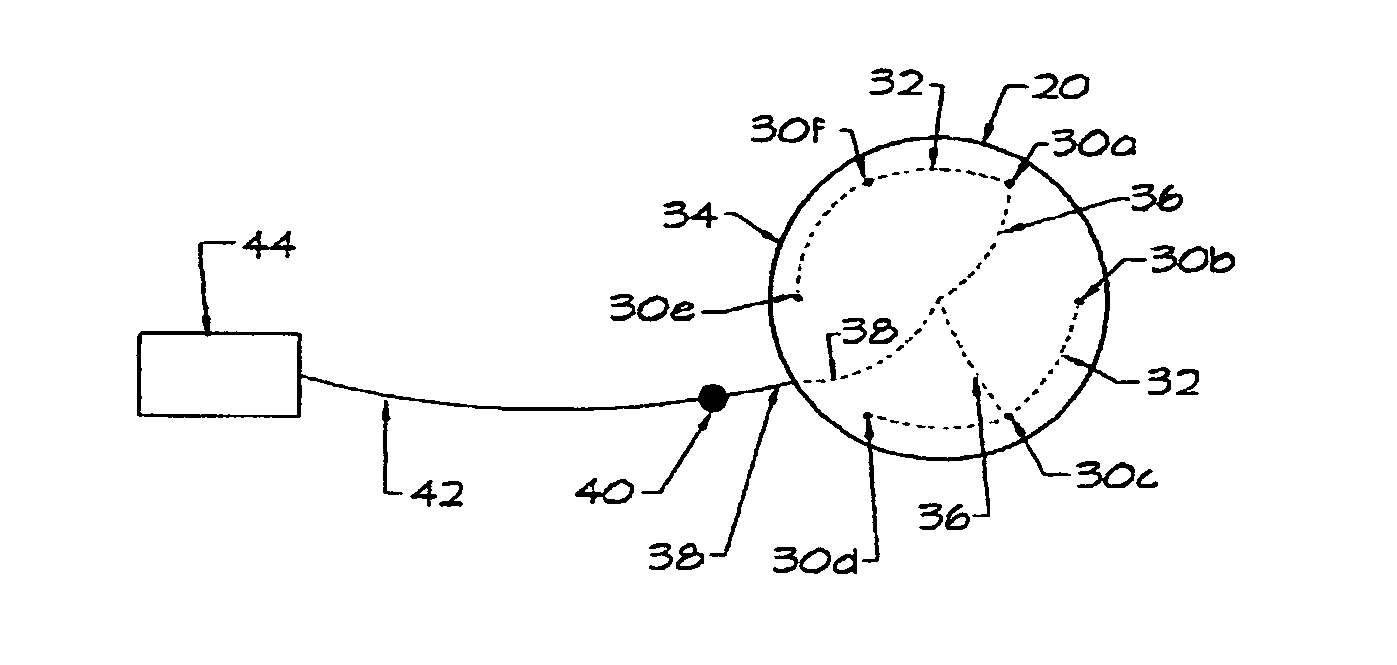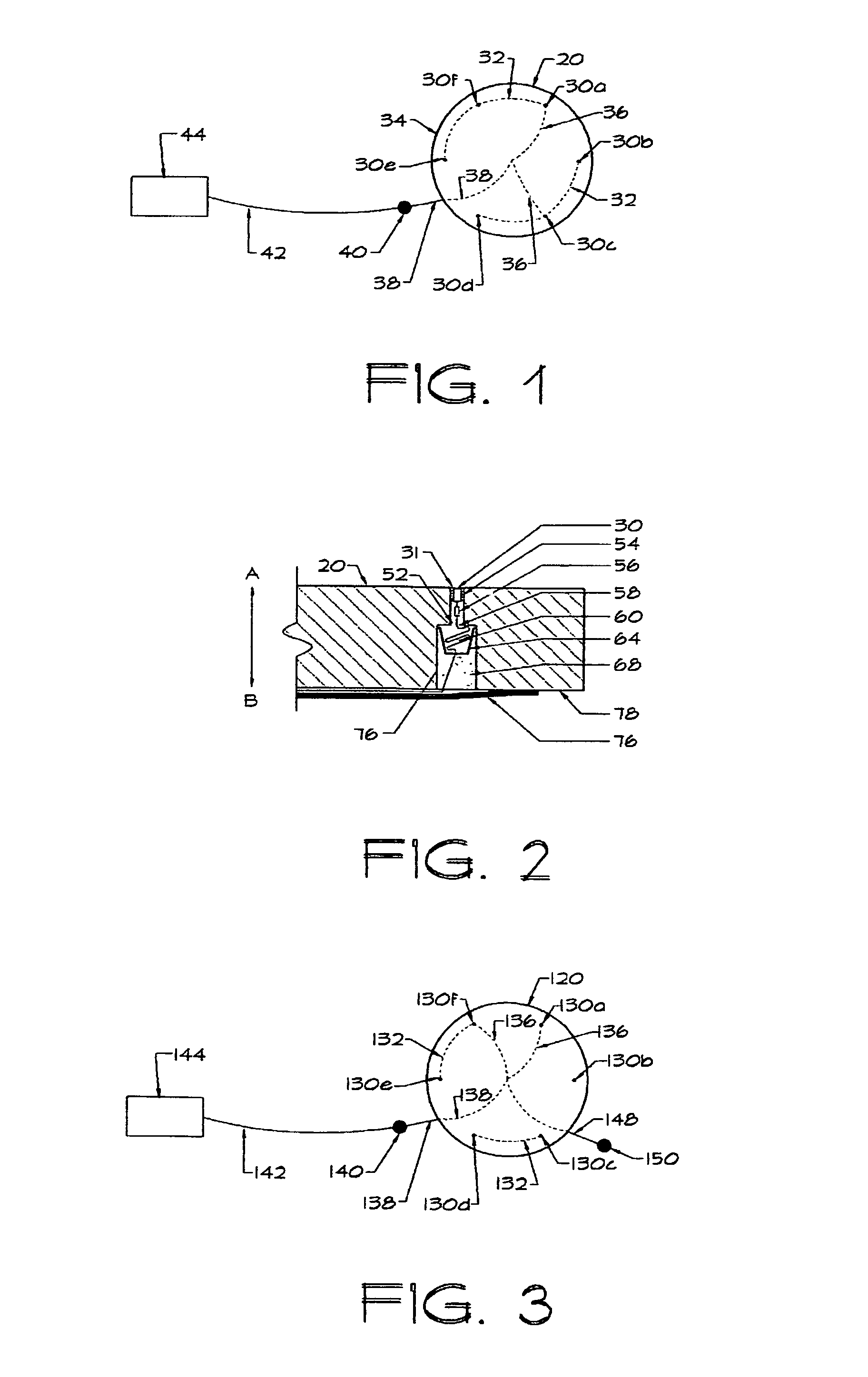Architectural member and decorative article with display lighting
a technology of decorative articles and architectural members, applied in the field of architectural members, can solve the problems of structural weakness, present several problems, structural weakness of fabricated solid objects, etc., and achieve the effect of economic operation and energy saving
- Summary
- Abstract
- Description
- Claims
- Application Information
AI Technical Summary
Benefits of technology
Problems solved by technology
Method used
Image
Examples
Embodiment Construction
[0043]With reference to FIG. 1 there is generally shown at 20 an Arch-Mem, decorative article incorporating the instant invention, in the configuration of a patio block, paver, or an otherwise illuminating article. A selected number of LED's (light emitting diodes) 30a (FIGS. 1 & 2) through 30n (FIG. 1) are each installed into a socket 31 (FIG. 2) that are, in turn, imbedded in article 20, equi-distant apart in an imaginary circle 32 near-to but spaced from the peripheral edge 34 of article 20 so as not to affect the stability and integrity of article 20. Article 20 has been shown with six LED's 30 all emitting illumination of the same color and equally spaced around imaginary circle 32: it being understood that: more or less LED's may be so deployed; that the LEDs need not necessarily be deployed in any kind of circle but may be embedded in another pattern or not in any pattern; and that all LEDs may emit illumination of the same color or different combinations of colors; all depen...
PUM
 Login to View More
Login to View More Abstract
Description
Claims
Application Information
 Login to View More
Login to View More - R&D
- Intellectual Property
- Life Sciences
- Materials
- Tech Scout
- Unparalleled Data Quality
- Higher Quality Content
- 60% Fewer Hallucinations
Browse by: Latest US Patents, China's latest patents, Technical Efficacy Thesaurus, Application Domain, Technology Topic, Popular Technical Reports.
© 2025 PatSnap. All rights reserved.Legal|Privacy policy|Modern Slavery Act Transparency Statement|Sitemap|About US| Contact US: help@patsnap.com



